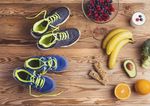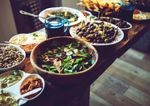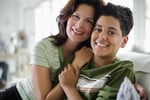Is junk food really on the menu for our Olympians?
by David Bryant, Accredited Sports Dietitian, Steve Pratt, Accredited Practising Dietitian and Accredited Exercise Physiologist
- August 15, 2016
- Leave a comment
- Marketing
- Healthy eating
- Physical activity
- Sugary drinks
- Industry
- Junk Food
- Advocacy
- Olympics
- Nutrition Facts
- LiveLighter Partners

How quickly does four years go? It seems like only yesterday we were witnessing the world’s best athletes participating at the London Olympics. Since then, the athletes competing at the Rio Olympic Games will have been training day and night for the privilege to compete on the world stage. Countless hours of training and recovery will have been committed to getting the most out of their bodies to achieve peak performance.
Nutrition plays a major part in maximising performance during training and competition, as well as supporting recovery and immune function. Additionally, just like athletes will train their bodies for various scenarios and conditions during competition, they have a nutrition plan for before, during and after competition. A nutrition plan helps to achieve familiarity on competition day, reduce nutrition related complications (such as stomach upset) and maximise performance.
So just what will (and won't) the athletes be eating in Rio?
In the lead up and during competition, athletes are boring and simple when it comes to food. Whilst there are various menu and buffet options (including junk food) in the athletes’ village, athletes tend to stick to their nutrition training and racing routine as designed by their sports dietitian. This ensures peace of mind for the athletes and reduces the risk of stomach upset. It could be the difference between a medal or not.
The athletes’ village feeds around 18,000 athletes and 60,000 meals each day. All menu items show nutritional information (including, carbohydrate, protein, fat and any allergens) to help athletes to meet their training demands.
Food hygiene is important, so hand sanitisers are available to minimise the spread of illness.
Athletes are part of a team that includes sports scientists who monitor most aspects of the athletes’ lives while they are in camp, including monitoring hydration status. Most countries have sports dietitians who work with athletes during training to develop a nutrition plan and are available at the dining hall to assist athletes with any nutrition queries or meal choices.
Nutrition plans vary drastically between sports and to a lesser degree between individual athletes. An athlete’s plan could include recovery snacks and meals, portable nutrition packs and performance-focused supplements. Supplements need to be approved by the World Anti-Doping Agency (WADA) before an athlete can use them.
Athletes need portable nutrition packs if they are spending time away from the village travelling or competing. Recovery snacks and meals rich in carbohydrate with a moderate amount of lean protein are vital straight after events for athletes that have to compete multiple times across the games.
Athletes practice mindful eating. After years of training, athletes are in tune with their bodies. They recognise hunger; that is when they feel their body requires more fuel after a hard session, they eat more food. On the flip side, if they have had a lighter day, they will stop eating when they’re full.
Elite athletes don't fuel their bodies with junk food
Athletes are people too though, and there is no doubt many will succumb to temptation when their competition is over and try the range of the sponsors’ junk food available in the athletes’ village. For most this will be temporary, before the hours of training and disciplined eating start again in the lead-up to the next competition.
Except in those brief moments after competition, athletes follow nutrition plans based on core foods; lean meat, reduced-fat dairy, wholegrain cereals; fruit and vegetables. There is little room in the plan for junk food, which makes the junk food and drink sponsors of the games and some athletes a slightly odd fit.
You won’t even have to watch the Olympics to get caught up in the marketing. Companies like Coca-Cola and McDonald’s spend millions to have their brands associated with the Olympics, it is wall-to-wall marketing. When you consider that most athletes wouldn’t use a lot of the products, it is obvious that the marketing has one audience in mind: the public. And it works. There are studies that show that endorsement of a product by an athlete increases sales, particularly by children. However, actions speak louder than words, what athletes do isn’t necessarily what they say.
With junk food and drinks all around us, it would be nice to see junk-free sports, where children can watch without being bombarded with promotions for unhealthy foods and drinks. Until then, the best hope we have is to help them to eat like athletes really eat.
David Bryant is an Accredited Sports Dietitian for Catalyst Dietitian. He is also currently undergoing a traineeship at the Western Australian Institute of Sport (WAIS), came 5th overall at the WA State Sprint Triathlon Championships and assists various athletes and people with achieving their health goals through a well-balanced and importantly tasty eating plan.







